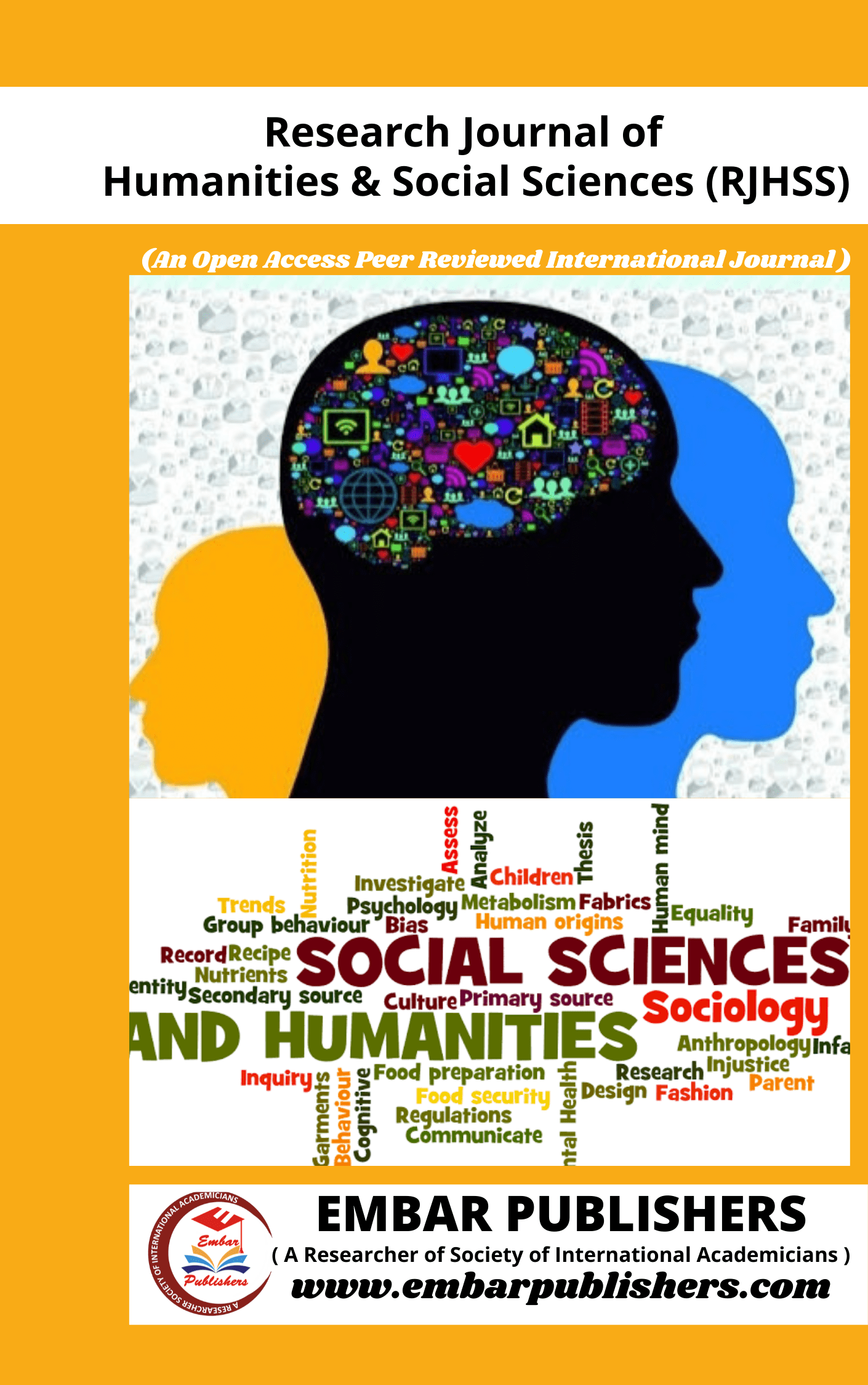
Development of International Regimes for Child Rights
Dr. Sukhwinder Singh
Assistant Professor, Women’s Studies Centre, Punjabi University, Patiala
DOI: doi.org/10.58924/rjhss.v4.iss4.p2
Published Date: 06-Aug, 2025
Keywords: Regime, Child Right, Convention, Optional Protocol
Abstract:
Children are the most valuable assets within any country and the future of any civilization depends upon the way it brings its children through having access to sufficient shelter, clothing, food, and education. Children must be guaranteed a loving and caring environment for their overall development as they are naturally more vulnerable than other groups in society because of their physical, emotional, and psychological immaturity. Children also require stronger protections due to their reliance on adults against any kind of exploitation that could impede their overall development. The international community and institutions are dedicated to children because of all these issues. The objective of this paper is to highlights the UN regimes protecting the rights of children along with its historical background and challenges to their implementation. At the end of the paper some suggestions are incorporated for the effectiveness of child rights regimes. This paper employs a qualitative research methodology to critically examine the child rights regimes under the aegis of UN.
References:
1. Keohane RO. International institutions and state power: Essays in international relations theory. Routledge; 2020 Feb 6.
2. Krasner SD. Structural causes and regime consequences: regimes as intervening variables. International organization. 1982 Apr;36(2):185-205.
3. Griffiths, Martin (2005). Encyclopedia of International Relations and Global Politics, London and New York : Routledge, p.722
4. Hasenclever A, Mayer P, Rittberger V. Integrating theories of international regimes. Review of international studies. 2000 Jan;26(1):3-3.
5. Griffiths, n.3, p.722
6. Bainham, Andrew (2001). The International Survey of Family Law, UK: Jordans Publisher, UK, p.268.
7. Watson, Alison M.S. “Too Many Children Left Behind: The Inadequacy of International Human Rights Law vis a vis the Child” in Qvortrup, Jens (ed.) (2009). Structural, Historical and Comparative Perspective, UK: Emerald Group Publishing Ltd., p.250
8. Wiggins, Douglas (1892) Children’s Rights, Boston and London : Houghton Mifflin, p.2.
9. Buaren, Geraldine Van (1995) The International Law on the Rights of Child, Dardrecht, Boston and London: Martinus Nijhoff Publisher, p.33.)
10. Veerman, Philip E. (1992) The Rights of the Child and the Changing Image of Childhood, Dordrecht, Boston and London: Martinus Nighoff Publisher, p.3. See also, Aries, Philippe (1996) Centuries of Childhood, Virginia: University of Virginia, pp. 126-130.
11. Rao, Mamta (2008). Law Relating to Women & Children, Lucknow: Eastern Book Company, p.440
12. Verhellen, Eugeen (2000). Convention on the Rights of Child: Background, Motivation and Strategies, Belgium : Garant Publishers, , p.55.
13. Chanlett and Morier. (1968) “Declaration of Child Rights”, International Child Welfare Review, Vol.5, No.3, p.22.
14. O’Neill, O. and Ruddick, W. (1979). Philosophical and Legal Reflection on Parenthood, New York: Oxford University Press, p.111.
15. Wal, S. (1999). International Ency. of Child Development: Priorities for 21st Century, Vol. 5, New Delhi : Sarup & Sons, , p.19
16. Verma, K.K (2008) “What are Child Rights” in Yojana, November, p. 21
17. Convention on the Rights of the Child
18. Cohen, Cynthia Price (et. All) (1996). “Monitoring the United Nations Convention on the Rights of Child: The Challenge of Information Management,” in Human Rights Quarterly, Vol.18, No.2, pp. 441-442.
19. Kuper, Jenny (1997). Child Civilians in Armed Conflict, Oxford: Oxford University Press, p.132. See also, Goldrick, Dominic Mc (1991) “The United Nations Convention on the Rights of Child” in International Journal of Law and Family, Vol.5, p.157.
20. Tiefenbrun, Susan (2007). Child Soldiers, Slavery, And the Trafficking of Children, Thomas Jefferson School of Law, Legal Studies Research Paper no. 1020341, p. 30. See also, Parmar, Sharnjeet (2009). Children and Transitional Justice, Harvard : Harvard University Press, p.71.
21. Buck, Trevor (2005). International Child Law, London: Routledge, p.47.
22. Optional Protocol on Sale of Children, Child Prostitution and Pornography
23. Flaim, Amanda (2004). Children’s Rights as Human Rights: An Analysis of Child Prostitution Through the Changing lenses of the 20th Century Human Rights Regime, Stanford University: International Comparative Education School of Education, p.149
24. Hammarberg, Thomas (1990)“The UN Convention on the Rights of Child-And How to Make it Work,” Human Rights Quarterly, Vol.12, No.1, Feb., p.99.
25. Rai, Rahul (2000) Human Rights UN Initiatives, New Delhi:Authors Press,pp.17-18.
26. Bajpai, Asha (2003) Child Rights in India: Law, Policy and Practice, New Delhi: Oxford University Press, p.20.
27. Hegarty, Angela (ed.) (2005), “Human Rights: An Agenda for 21st Century”, London and Sydney: Cavendish Publishing Limited, p.173.
28. Jupp, Michal(1990) “The UN Convention on the Rights of the Child: An Opportunity for Advocates”, Human Rights Quarterly, Vol.12, No.1, pp.135-136.
29. Buaren, n.9, p.16.
30. Bajpai, n.26, p.21.

ISSN(Online): 2945-3968
Publisher: Embar Publishers
Frequency: Bi-Monthly
Chief Editor: Dr N.L.N Jayanthi
Language: English
